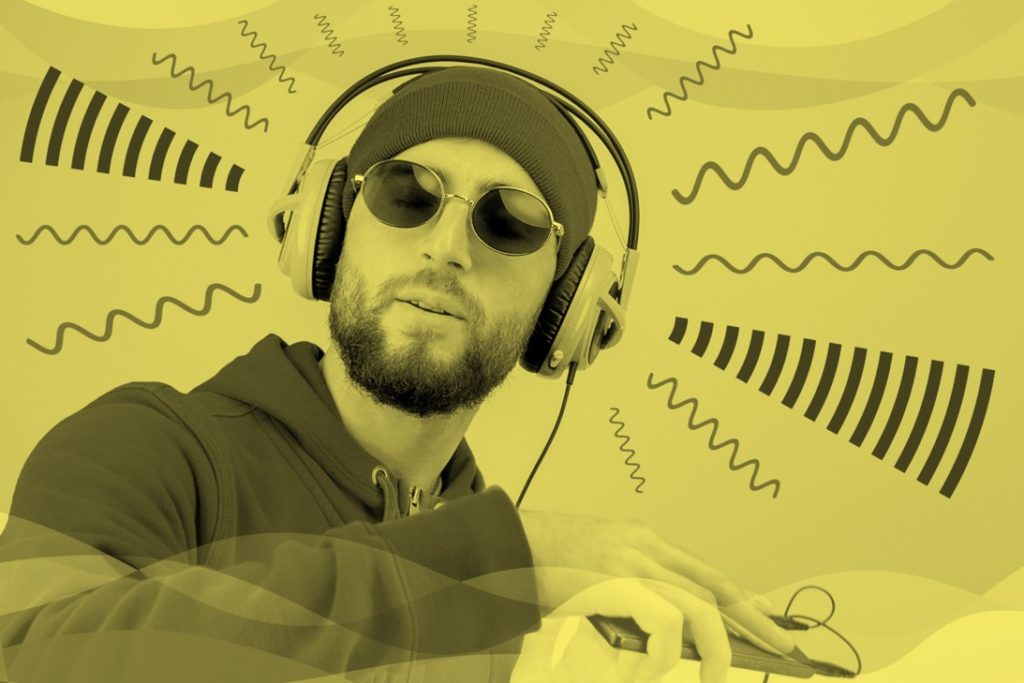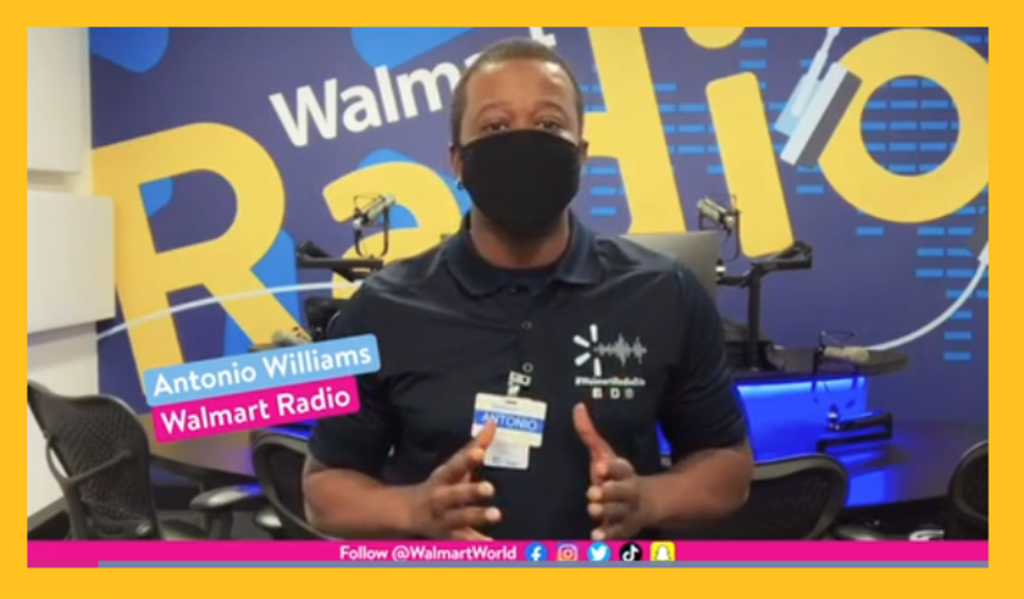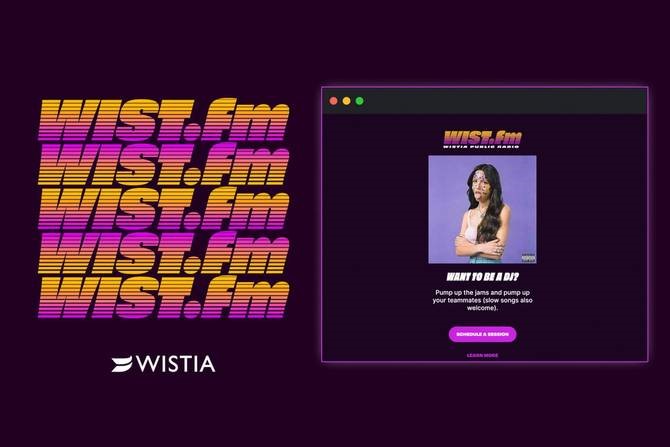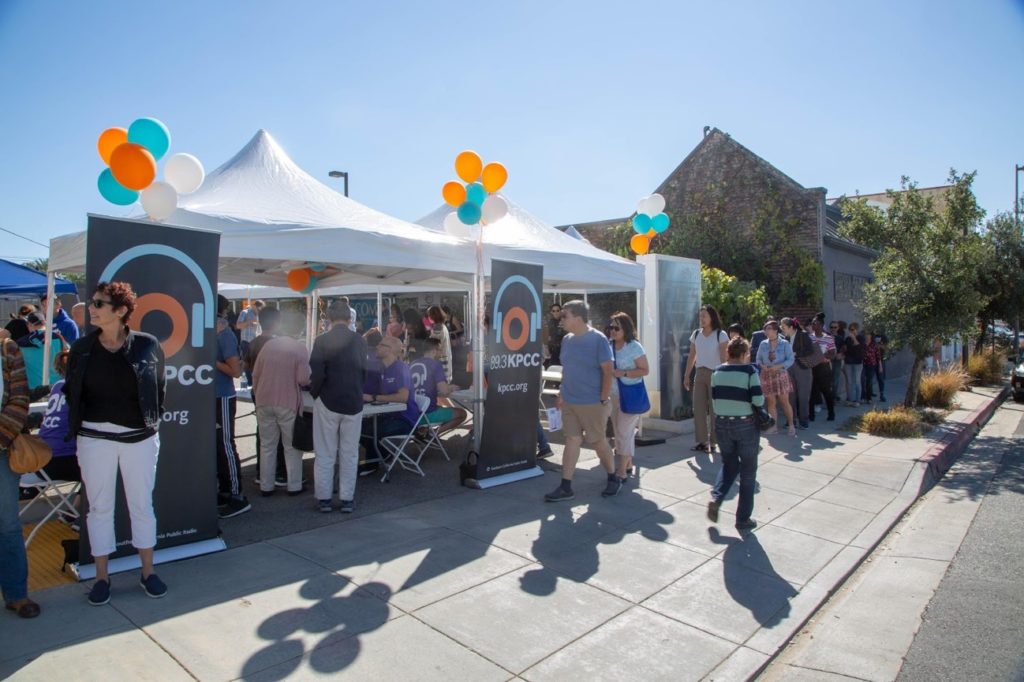
Welcome to another edition of #TBT. Today’s journey will be a quick, but interesting one. The JacoBLOG time machine is set to May 2022 – just 24 short months ago. But its topic – the appeal of radio to non-radio people is a universal.
For this post, I pulled out examples of “radio” being done by brands as diverse as Walmart, a federal penitentiary, and a research facility run by the military in Antarctica – all three were highly in-demand in their respective communities.
And then there was AMP Radio, an ambitious project by Amazon where anybody and everybody could start up a “radio station” and play disc jockey. When today’s post was published, Amazon was reportedly on a hiring spree, looking to bring 500 into their Atlanta facility to handle AMP Radio’s launch.
Meantime, Amazon ended up launching AMP in March 2023. And they shut it down in October 2023 – yes, just six months later.
Doing lousy radio is easy. Doing great radio remains hard. – FJ
May 2022
In recent months, I’ve talked about the pros and cons of the “R-word” for companies once known for their AM and FM portfolios. But these days, you rarely hear radio broadcasters actually refer to themselves as radio broadcasters. Every company is multi-media or multi-platform. Yes, we still offer radio, but so much more.
Why has this happened?
Part of the reason is that most of the medium and larger players have invested – in some cases, very heavily – in digital assets. Many have beefed up their portfolios with bona fide digital content and distribution. Podcasts, streams, video, and other content pieces are now additive to the traditional radio product. It’s logical for them to want to emphasize that.
But if they joined you under the “cone of silence,” corner office execs might admit that radio has gotten a bad image. It’s no longer cool to say you work in radio, much less still listen to a terrestrial station. Digital content and its distribution outlets are all considerably more popular places to hang out in or advertise on. And these days, it’s increasingly harder to find teens interested in radio careers. Most would rather be influencers on TikTok or YouTube, have a channel on Twitch, or become a sideline reporter for ESPN.
But radio? No way, Ray.
And yet….
I have written blog posts in just the past year where all sorts of companies, organizations, and groups are starting up their own radio stations. If “radio” has such a negative image, why are people going to great lengths to build their own?
Back in late 2020, it was Walmart Radio, a station for both the company’s workers and their shoppers. Their “station” features live DJs whose full-time jobs are to entertain the masses, or at least those shopping at Walmart. They have merch, they run contests, they air phones, and they take requests. In short, they’re doing “radio.”
company’s workers and their shoppers. Their “station” features live DJs whose full-time jobs are to entertain the masses, or at least those shopping at Walmart. They have merch, they run contests, they air phones, and they take requests. In short, they’re doing “radio.”
Beasley’s Tampa market manager, Steve Triplett, first told me about Walmart Radio. Here’s his comment:
“It says so much about the value of live audio content for creating and enhancing the shopping experience. This is exactly what great radio does for life in general.”
Then it was a “Junk Drawer” item I lovingly referred to as “Jailhouse Rock.” The story was about a Polk County, Texas, state penitentiary known as the Allan B. Polunsky unit. I wrote about them early in 2022.
The incarcerated inhabitants of said prison petitioned their warden to get an FM station. And he complied. The Tank is at 106.5 FM, just strong enough to cover the various cell blocks.
 For the residents of this prison, the radio station is a God-send. Those invisible airwaves crackle with hope for men whose lives are marked by bad luck and worse choices.
For the residents of this prison, the radio station is a God-send. Those invisible airwaves crackle with hope for men whose lives are marked by bad luck and worse choices.
Warden Daniel Dickerson gave the green light to this radio station, and he talked about what it means to those he is charged to supervise:
“They may not all have TV, but everyone has a radio. And anybody who’s been on a cell block knows some folks will turn the radio up loud enough where even if you didn’t have one, you’re probably going to hear it anyway.”
But if you want to talk about radio in an unusual place, it doesn’t get more remote than Antarctica, the home of the aptly named Ice-FM or the American Forces Antarctic Network at McMurdo Station. I wrote about this unique radio outpost last January.
This station has been on the air since the 1950s, entertaining resident scientists conducting research in fields like astrophysics, biology, and glaciology.
biology, and glaciology.
Jobs at Ice-FM are hotly in demand. Overall, 75 volunteers pitch in to play a role at the station when the weather is relatively warm – like 20 below zero. Boasting 12,000 vinyl records, it’s a little harder to find radio stars in the frigid winter, but 30 hardy souls keep Ice-FM on the air.
What makes this station tick? Staff veteran, Kristyn Carney (pictured), has it all figured out:
“It’s…great for morale. It’s exciting. Most people in the world won’t get an opportunity to work the DJ equipment that we have or host a show.”
And lastly, a new entry in “Radioville,” this one from a seemingly unlikely workplace:
A B2B video hosting platform company located in the erudite town of Cambridge, Massachusetts.
As reported in Morning Brew, the company is Wistia, and their employees are still mostly working from home.
 CEO Chris Savage conducts internal research which uncovered a problem with his company’s culture. Not surprisingly, the many months of WFH made many employees feel out of touch with their team.
CEO Chris Savage conducts internal research which uncovered a problem with his company’s culture. Not surprisingly, the many months of WFH made many employees feel out of touch with their team.
The answer? Launch a radio station, of course.
WIST Radio was created from a Hackathon more than a year ago, and after overcoming technical difficulties, the station is now live streaming. According to Wistia, 158 of the company’s 180 employees now listen – an amazing cume rating of 88%.
When a live jock takes over WIST Radio gets behind the mic, the chat heats up on a dedicated Slack channel. Alerts go out about 30 minutes before shows to make sure the company audience is tuned in.
The station has also spawned a company podcast, where employees interview one another.
The most popular DJ is Frank Emanuele who has has a benchmark aptly called “Fridays With Frank.” By day, he is Wistia’s social media manager, but he is seeing a level of engagement with WIST Radio that isn’t present with other team-building activities:
“(There’s a) layer of water-cooler talk and a layer of connectedness that you wouldn’t get from more structured kinds of fun.”
At a time when COVID has kept teams apart at Wistia, the radio station has brought them back together.
So, what do we make of this apparent paradox? People from all walks of life – tech workers, arctic scientists, department store workers, and convicted felons – have one thing in common:
They LOVE radio and they want to be part of it.
When it’s relevant and accessible to them, they want to be on the air, they want to tune-in, and they want to engage with their communities.
And yet, when we think about commercial radio’s travails, many traditional listeners have gravitated away, and not enough young people are giving the medium much of their time.
So, how do we square this?
First of all, many “regular folks” have a passion for radio. But they sure don’t love what they hear on most radio stations. They aren’t included, and most stations aren’t exactly audience-focused. Formats just change, personalities disappear, and between squeaky tight playlists and bloated commercial loads, the listening experience is often substandard.
People involved in the four “stations” in this post feel their interests are being served by what they hear. They are made to feel a part of them.
On the other hand, most commercial radio stations operate like “gated communities.” Many people have never seen the inside of a radio station, much less an air studio when there’s been a real live host on the air.

Often when people visit a broadcast station to pick up a prize, they’re greeted by a busy receptionist who oversees the transaction, and then sends the winner on their merry way, as they try to answer the phones for a cluster of five stations?
So, how do we make our radio stations more open and more accessible, especially during a time when security has become an issue?
Public radio stations have generally done a better job, holding “open houses” at key times during the year. Listeners can show up, meet the staff (behind the mic and behind the scenes), tour the station, take (and share) photos, pick up some swag, and have a great time. There’s usually snacks – food trucks and/or free samples. Guests have the chance to ask questions, take photos, and take in just how electric a radio station can be.
I very much realize that not every radio station is a showplace. Believe me – I’ve been inside more radio stations than you have. I’ve seen them all, from the sublime to the ridiculous. In so many cases, there is still something magical about a radio station, if we give the audience a chance to participate. “Guest DJ” features have enjoyed great popularity in the past. And with social media to highlight these appearances, it would not be difficult to generate enthusiasm and buzz.
While not a megatrend, the “minitrend” for these homemade radio stations showing up in unlikely places is going to continue. And unlike some of these unicorns – stations in prison or in the frozen tundra of Antarctica – big money is funding personal radio stations that anyone with a smartphone and a little initiative can launch.
 In this blog, I’ve talked about Amazon’s concept – AMP Radio. Last March, “Democratizing Radio” talked about Amazon’s plan to give anyone a chance to run their own radio station.
In this blog, I’ve talked about Amazon’s concept – AMP Radio. Last March, “Democratizing Radio” talked about Amazon’s plan to give anyone a chance to run their own radio station.
Now, a new story in the Atlanta Business Chronicle reveals a next step in Amazon’s plan to bring radio to the masses. In “‘Epicenter of modern music:’ Amazon to hire 500 people in Atlanta as it launches new product,” reporter Erin Schilling tells us Amazon is on a hiring spree to support AMP.
She quotes Charlotte Barge, head of engineering for AMP, who notes Atlanta is “the epicenter of the modern music scene and home to many of the world’s greatest musicians.” The trend toward small, personalized radio stations for everyman and everywoman is gathering steam.
It is striking that people don’t create mock dentist offices, accounting firms, liquor stores, or nail salons. But they do set up radio stations whose purpose it is to boost morale, foster camaraderie, and passionately discuss their love for music.
All these radio sandboxes were inspired by the real thing – stations people grew up with that provided feelings of joy, excitement, and romance.
How can today’s radio stations recapture some of the magic they once possessed?
Maybe we should ask some of these would-be “program directors” and “DJs” who embody the passion that was once part of everyday radio.
Thanks to Gary Kline and Bill Sherard. And to Michelle McKormick, a lollipop.
- Why Radio PDs Are A Lot Like NBA Coaches - May 8, 2025
- Memo To Radio: We Have Met The Enemy And It Is… - May 7, 2025
- The Guy In The Next Car - May 6, 2025




“Doing lousy radio is easy. Doing great radio remains hard. – FJ”
I just printed that out and hung on the wall behind my desk. I cant think of a better way to say it, nor a better way to convey the message to where and whom it matters most.
Appreciate that, Alan. I’m glad it resonated for you. Thanks for rading and ommenting.
I have to say doing lousy radio is indeed easy. But I’m not so sure doing “great radio” should be “that” hard. I’m not talking here about engineers who have to get to a remote site in the middle of the night or sales people making quarterly goals. But when it comes to on-air content, if someone finds it “hard,” well, it may not be their thing. It may always be hard. And it might always be “lousy,” too. That’s not to discount the endless hours of hard work the Howard Sterns and other greats put into making their work sound so easy. But to a person, the very best I’ve known actually find it comes easy to them. They love it, and couldn’t imagine ever doing anything else. They’re having a great time. And we’re having a great time listening. But if someone finds it hard to do “great” radio, I think people will find it hard to listen to.